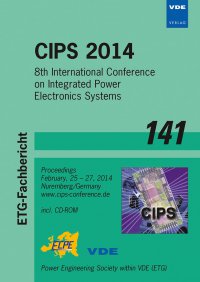Temperature Humidity Bias (THB) Testing on IGBT Modules at High Bias Levels
Konferenz: CIPS 2014 - 8th International Conference on Integrated Power Electronics Systems
25.02.2014 - 27.02.2014 in Nuremberg, Germany
Tagungsband: CIPS 2014
Seiten: 7Sprache: EnglischTyp: PDF
Persönliche VDE-Mitglieder erhalten auf diesen Artikel 10% Rabatt
Autoren:
Zorn, Christian; Kaminski, Nando (Institute for Electrical Drives, Power Electronics, and Devices (IALB), University of Bremen, Germany)
Inhalt:
The temperature humidity bias (THB) test is a standard for accelerated life testing with respect to corrosion and other humidity driven degradation mechanisms. Usually, 1000 h tests at 85°C and 85% relative humidity are used to predict up to 25 years of operation and the bias is usually limited to 80 V in order to fulfil the respective standards asking for limited self-heating. However, it was suspected that a higher bias level is a more severe test condition and should be at least in the order of the typical DC-voltage. In this work a variety of 1700 V and 1200 V IGBT modules from different manufacturers were tested in THB at bias levels up to 90% of nominal voltage. The higher bias resulted in significantly more stress symptoms compared to the respective 80 V references. Depending on the devices under test particular degradation modes were measureable. The failure analysis yielded clear indications of electrochemical migration. Finally a test with 65% and 90% of the nominal voltage was employed to determine the acceleration due to bias. The result was a factor of about two and emphasises the fact that bias is indeed a strong acceleration factor. In fact, the reference samples biased with 80 V did not show degradation of the blocking capability, though, electrochemical migration has been identified there, too.


